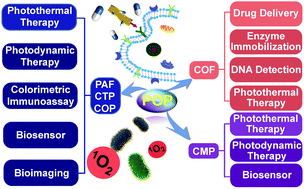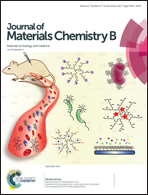Creation and bioapplications of porous organic polymer materials
Abstract
Enormous effort has been devoted to the synthesis of porous organic polymers (POPs) and their extensive applications in gas adsorption and separation, supercapacitors, optoelectronic devices, chemosensors and catalysis. Owing to their superior characteristics including porous structure, facilely tailored functionalities, low cytotoxicity, desirable biocompatibility and tunable photophysical properties, POPs have attracted unprecedented attention in biomedical and related fields and afforded promising platforms for biomedical applications including nanocarriers, phototherapeutics, biomimetic systems, anti-microbial activity, bioimaging and biosensing. In this review, we will highlight recent research progress of POP-based biomedical platforms, ranging from the elaborate designs and synthetic methodologies to biologically related structure–function correlations.

- This article is part of the themed collection: Recent Review Articles


 Please wait while we load your content...
Please wait while we load your content...